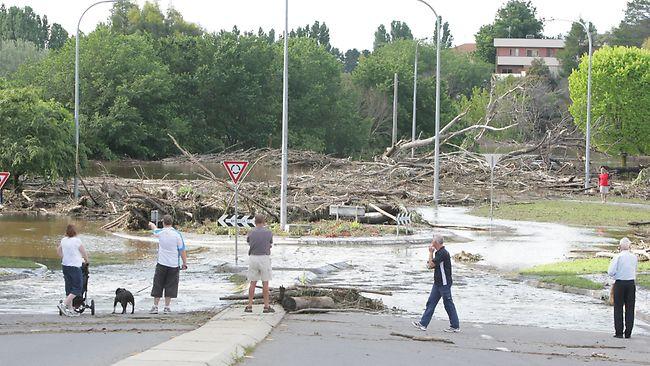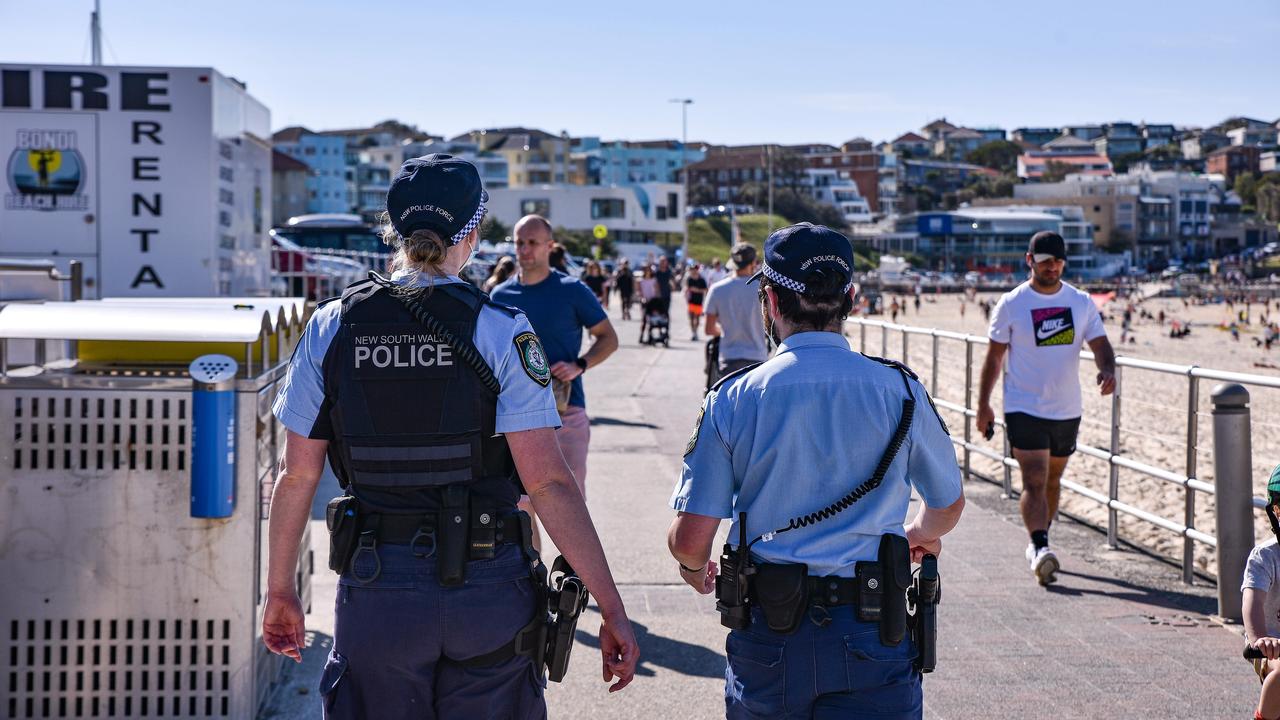Disaster declared as river swallows town of Queanbeyan
IT took just over two hours for the swollen Queanbeyan River to rise 3m, splitting the southern NSW town in two and forcing more than 100 people to flee.

IT took just over two hours for the swollen Queanbeyan River to rise 3m, splitting the southern NSW town in two and forcing more than 100 people to flee.
As Queanbeyan experienced its worst flooding in 30 years, emergency services personnel rescued 10 people by boat and the town's main shopping precinct became submerged beneath muddy flood waters.
Heavy rains continued to lash large belts of NSW last night from Sydney to the central western town of Bathurst and southwards into Victoria.
More than 300 people remain isolated on properties from Queensland to South Australia as the flood crisis across eastern Australia worsened.
Victorian emergency services are now focused on the townships of Myrtleford and Wangaratta, in the state's northeast, and Harrow in the west, where floodwaters are expected to peak today and force further evacuations.
Across NSW, about 35 areas, including Queanbeyan and flood-ravaged Wagga Wagga, have been declared disaster zones, with flood alerts being issued late yesterday for the central western towns of Bathurst and Orange. A NSW Department of Industry and Investment spokesman said at least 1200 tonnes of grain, 50km of fencing, 4500ha of crops and 1000 bales of fodder had been lost as a result of persistent rain and flooding since the weekend.
In Queensland, the flood-related death toll hit four yesterday, after the confirmation of two further drownings in swollen waterways.
South Australia was also struck by the wild weather yesterday, as winds and heavy downpours dropped 120mm of rain across the state, causing flash flooding and blackouts to about 26,000 homes and businesses.
Defence force personnel have been called in to assist with the disaster relief, with close to 5000 calls for help being logged across NSW, Victorian and South Australia yesterday. In NSW alone, 350,000 sandbags have been used to try to keep murky flood waters out of homes and businesses, some helicoptered in to remote areas to stop isolated homes from becoming inundated.
In Queanbeyan, overnight falls of 100mm and heavy overspills from the Googong Dam caused the river to swell to a peak of 8.4m at midday, inundating businesses and homes in low-lying streets.
A pregnant woman was airlifted to hospital, while a family of five, including a six-month-old baby, was rescued by an SES dingy.
Relieved to step out on to dry ground with his family and some of their belongings, the baby's father, Meritan, said: "Everything is OK, with the help from the SES."
Scores of local residents last night faced the prospect of sleeping in emergency relief centres set up at Queanbeyan High School and the local TAFE centre.
Tim Asquith, 28, was at home when SES personnel banged on his door just after 9am yesterday.
"They told me to get out or you will be trapped," he said.
Mr Asquith said the rising waters had inundated the basement car park of his Trinculo Street apartment block by midday yesterday.
Down the street, stranded locals Brendan Betts, George Rutley, Jessica Byron, Cameron Bennett and Brad Wills appeared relaxed as they watched the brown tide rise above the bonnet of a silver sedan just two doors down.
Their riverside apartment complex was cut off from the road yesterday, preventing them from going to work.
"I walked out the door at half past 7 and the water was already over the driveway," Ms Byron said. "I couldn't get out, and within an hour the water was almost the whole way up our driveway."
The Hume Highway was cut off at Tarcutta yesterday, while to the west in the regional hub of Wagga Wagga 20 people were evacuated as a further 65cm of rain fell on the already flood-ravaged town.
Regional controller James McTavish said the Murrumbidgee River could return to the peak levels experienced on Monday as water accumulated from higher in the catchment.
However, Mr McTavish said the SES did not expect the renewed flows to overtop Wagga Wagga's levees, which were close to being overcome earlier this week.
Close to 700 people have been evacuated from parts of Wagga Wagga and nearby towns.
Last night, about 50 residents from the partially evacuated suburbs of East Wagga and Gumly Gumly were allowed to return to their homes.
An evacuation order remained in place for the much larger suburb of North Wagga -- home to about 600 people.
With more stable conditions forecast for the weekend, an SES spokesperson told The Australian last night: "For the moment, we've got a little lull; we're just hoping it's going to last."
In Queensland, the body of 15-year-old Mitch Edwards was located at Wappa Falls, on the Sunshine Coast, north of Brisbane, near where he had jumped into a flooded swimming hole.
Separately, a man's body was found in a car washed off a submerged causeway near Nebo, west of Mackay, on Tuesday.
Distraught members of the Edwards family were on hand yesterday when the teenager's body was found.
His death was the seventh recorded at the popular swimming spot, including that of another 15-year-old, Dominic Hayes, three years ago.
The big wet has come at the worst possible time for crop growers, with less than 10 per cent of winter crops harvested in some parts of the Victoria and South Australia.
With more than $3 billion now estimated to be scratched off the value of the wheat, barley and canola harvest, National Farmers Federation president Jock Laurie said the morale of farmers across the country continued to plummet.
Additional reporting: Jamie Walker, AAP


